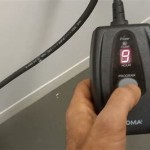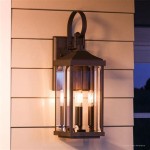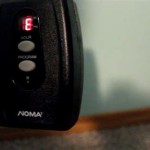How To Sand Metal Outdoor Furniture
Sanding metal outdoor furniture is a crucial step in restoring its appearance and preparing it for repainting or other finishing processes. Rust, peeling paint, and general wear and tear can detract from the furniture's aesthetic appeal and compromise its structural integrity. Proper sanding techniques can effectively address these issues, resulting in a revitalized piece that enhances any outdoor space.
Gathering Necessary Supplies
Before beginning the sanding process, assembling the appropriate tools and materials is essential for efficient and effective work. Having everything readily available will streamline the process and minimize interruptions.
- Safety Glasses and Dust Mask: Protecting eyes and lungs from metal dust and debris is paramount.
- Drop Cloths or Plastic Sheeting: Shielding surrounding areas from sanding dust simplifies cleanup.
- Sandpaper in Various Grits: Starting with coarser grits (e.g., 60-80) for heavy rust and paint removal, then progressing to finer grits (e.g., 120-220) for smoothing the surface.
- Sanding Block or Orbital Sander: A sanding block provides greater control for detailed work, while an orbital sander offers faster removal for larger areas.
- Wire Brush or Scraper: Useful for removing loose paint, rust flakes, and debris before sanding.
- Metal Primer (if repainting): Applying a metal primer after sanding promotes paint adhesion and prevents future rust.
- Tack Cloth: Removing residual dust and particles after sanding ensures a clean surface for priming or painting.
Preparing the Furniture
Adequate preparation of the metal furniture ensures optimal results from the sanding process. Careful cleaning and assessment of the furniture's condition will contribute to a smoother, more consistent finish.
- Cleaning the Furniture: Thoroughly clean the furniture using a solution of mild detergent and water to remove dirt, grime, and loose debris. Rinse and allow to dry completely.
- Removing Loose Paint and Rust: Use a wire brush or scraper to dislodge any loose paint flakes, rust scales, or other surface imperfections. This step prepares the surface for sanding.
- Protecting Nearby Areas: Cover the surrounding area with drop cloths or plastic sheeting to minimize the spread of sanding dust.
Sanding the Metal
The sanding process itself requires a systematic approach to ensure even and consistent removal of rust and imperfections. Following a structured methodology improves the final result and minimizes potential damage to the metal.
- Starting with Coarse Grit Sandpaper: Begin with coarser grit sandpaper (e.g., 60-80 grit) to address heavy rust, deep scratches, or peeling paint. Apply even pressure and sand in the direction of the metal's grain (if applicable).
- Progressing to Finer Grits: Gradually move to finer grits of sandpaper (e.g., 120-220 grit) to smooth the surface and eliminate any scratches left by the coarser grit. Continue sanding until the metal feels smooth to the touch.
- Sanding Detailed Areas: For intricate designs or hard-to-reach areas, use smaller pieces of sandpaper or a sanding block to ensure thorough coverage and avoid damaging the metal.
- Using an Orbital Sander (Optional): For larger, flat surfaces, an orbital sander can significantly accelerate the sanding process. Maintain a steady pace and avoid applying excessive pressure, which can damage the metal.
Cleaning Up After Sanding
Proper cleanup after sanding is crucial for achieving a professional finish and protecting the surrounding environment. Thoroughly removing sanding dust prevents contamination and prepares the metal for subsequent finishing steps.
- Wiping Down the Furniture: Use a tack cloth to remove all residual dust and sanding particles from the metal surface. Ensure every crevice and corner is thoroughly cleaned.
- Disposing of Sandpaper and Debris: Dispose of used sandpaper and collected dust properly according to local regulations.
- Cleaning the Surrounding Area: Carefully remove drop cloths or plastic sheeting and clean the surrounding area to remove any airborne dust.
Preparing for Finishing
Once the sanding process is complete, the metal furniture is ready for finishing. Whether applying a fresh coat of paint or another protective coating, proper surface preparation after sanding is essential.
- Applying Metal Primer (if painting): If repainting, apply a thin, even coat of metal primer to the sanded surface. This promotes paint adhesion and provides a barrier against future rust formation.
- Allowing Primer to Dry: Allow the primer to dry completely according to the manufacturer's instructions before painting. This ensures proper bonding and prevents peeling or chipping.
Sanding Between Coats (If Applicable)
If multiple coats of paint or other finishes are applied, light sanding between each coat can enhance the final result.
- Using Fine Grit Sandpaper: Use very fine grit sandpaper (e.g., 220 grit or higher) to lightly sand the surface between coats. This creates a smooth, even base for subsequent applications.
- Removing Dust Before Next Coat: Wipe down the surface with a tack cloth after sanding to ensure complete dust removal before applying the next coat.

How To Paint An Outdoor Metal Chair

How To Paint An Outdoor Metal Chair

How To Repaint Metal Outdoor Furniture

How To Refinish Metal Patio Furniture That S Covered In Rust

How To Paint An Outdoor Metal Chair

How To Paint An Outdoor Metal Chair

How To Refinish Patio Furniture Bob Vila

How To Refinish Outdoor Furniture The Craftsman Blog

How To Refinish Metal Patio Furniture Practical Whimsy Designs

How To Spray Paint Patio Furniture Ultimate 2024 Guide







